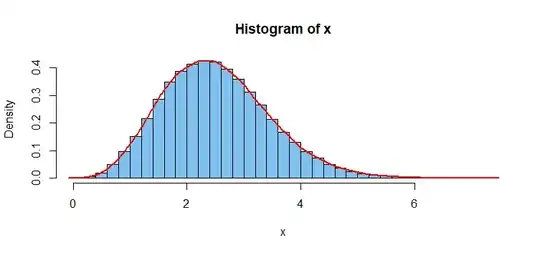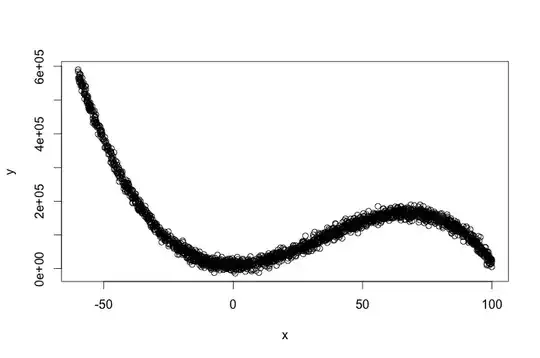Consider a map with two concentration ellipses like this below. The Vomit_y group is (almost?) perfectly vertical, while the Vomit_n group seems to be oriented at about 45 degrees. I understand that Vomit_y displays no correlation between Dim1 and Dim2, while Vomit_n displays a strong correlation. What interesting things might this tell me about the differences between the two groups? How would that differ if, say, the two ellipses were "parallel" but non-overlapping, or if they were oriented at 90 degrees to each other?
Individuals factor map - MCA with two concentration ellipses:

